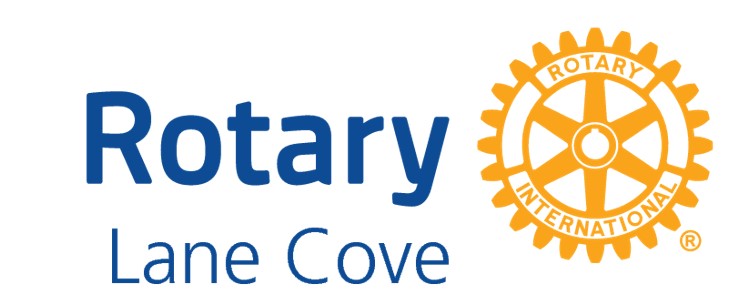Scribe report 9-6-15
Meeting Notes from 2nd substitute scribe for Tuesday 9 June with 28 attending
John Donald - Red Shield Appeal reported collection via the RCLC organised collectors was about $22,500, down on last year’s $24,000 but does not include funds collected by Apple recruited door knockers whose collections are not included in the Lane Cove total.
Schools Public Speaking Competition, - Ron Tweedie advised the winner was Phoebe Gullotta Mowbray Public School and runner up was James Wilson of Riverview son of former RC Lane Cove member Dr Stephen Wilson
Thanks to rostrum NSW and Roger Wescombe for the adjudication and organisation and to 10 wonderful young speakers.
Dick Dawes supported the speaking competition and described the good attendance and administration. Encouraged members to attend next year and support this important local youth project.
Jenny May asked for more to register and join the RCLC crowd and attend District Changeover Sat 27 June at Hornsby RSL, 6 for 6.30pm when DGE Gina Growden will become District Governor.
Ann Smith asked for nominations for Paul Harris Fellow Recognition from within the club and or community. All nominations to Ann by Friday 12th.
John Cronly as Sgt fined Frank Rule for his busted name badge.
Adrienne omitted to complete the U.S. Entry form. Travel Agent major fine!
YouTube access during meeting time, resulted in a fine to the Sgt
Bob Cartwright for 24 years membership and Ron Tweedie for 9 years and James Shevlin for 6 years membership.
John Palmer for arriving just as the cheques were being handed out.
Frank Rule boasted about daughter Emma graduating next week from UNSW with a Degree in Fine Arts. Congratulations Emma.
John Donald goes up for auction July 18.
James Shevlin introduced our guest presenters Susan and David Meagher. David a corporate lawyer and Sue a property developer joined Sue's sister Lyndal Dykes in a cheese making workshop business and teach people how to make cheese.
Sues sister (Lyndal) lives on the north coast and is virtually self sufficient in providing food for her family.
She learned to make cheese in a two day workshop but was overwhelmed by the complex approach of the teachers. Later she thought about the fact that Cheese making was around in the bronze era and spread through the roman world.
Cheese was thought to have originated by farmers storing milk in the stomachs of slaughtered herbivores and the rennet enzymes in the stomach converted the milk to a form of cheese so it was made by illiterate peasants in basic surroundings, so she decided if they could do it, she would have a go at making cheese and the rest is history.
Sue makes 'homemade' cheese by taking the science out of cheese making. It's simple and doesn't need biochemistry or microbiology training.
Cheese is made from milk and acid (white vinegar) which separates curds from the whey and voila cheese.
David heated the milk to 91 degrees, Harry stirred as a good stirrer does, just one stir as Adrienne added the vinegar and hey presto the mix curdled and the result was ricotta. The mix is left to stand and the curds form a raft on top of the whey that is later lifted off the liquid and placed in a container and allowed to cool and drain the excess vinegar. The amount of cheese yielded depends upon what type of cheese you’re making. 1 kg of milk yields 600 grams of lambda cheese.
Whey can be used as the protein for pigs and chooks and body builders love the protein and whey protein powder is a by product. It also beefs up the pigs and chooks.
Originally Sue started teaching cheese making from home and before long was running four workshops per week. Later they moved to a shopfront in Northbridge and now travel all over NSW teaching cheese making in community colleges. A cheese workshop is for up to 12 students and runs for 4 or 6 hours.

Sue Meagher's Cheese Making Workshop at Lane Cove Rotary
on 9 June 2015
Why would you want to make cheese when it's so easy to buy?
You buy the milk unhomogenised and pasteurised from the supermarket. That's the milk with the cream on top.
You don't need preservatives.
The ingredients are fresh. You control the bacteria.
You save on packaging and transportation.
It's a very cost effective solution especially for young families.
Light milk makes cheese that tastes like soap.
A2 milk is from Jersey cows and makes no difference to the cheese.
Lyndal has written a book about cheese making which describes the making of 22 different cheeses.
Sue outlined a revolution on the NSW far south coast where farmers have started to bottle and sell their own milk, especially milk high in fat content, such as from Jersey cows and to a lesser extent Friesian cows which have a slightly less fat content but higher milk yield. Jersey (golden brown with black and white lips – they’re cuteys) gives 40 litres, a Friesian (Black and White) gives 60 litres per day.
David described a $500,000 robotic milking shed at Nowra that does the entire milking process automatically directed by an electronic tag around the cow’s neck.
An excellent presentation with many thoughtful questions suitably rounded out with a thank you by Margaret Silink. All liked the whey the presentation was so informative with cheesy photographs taken.
